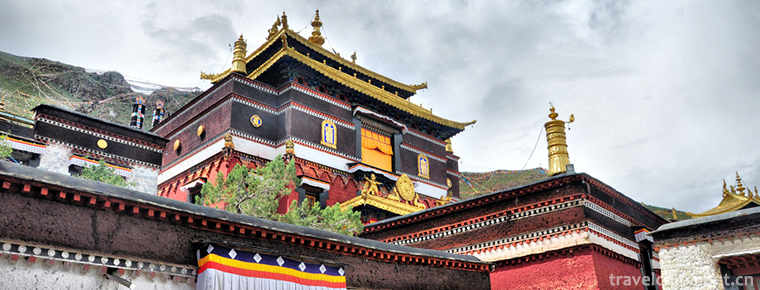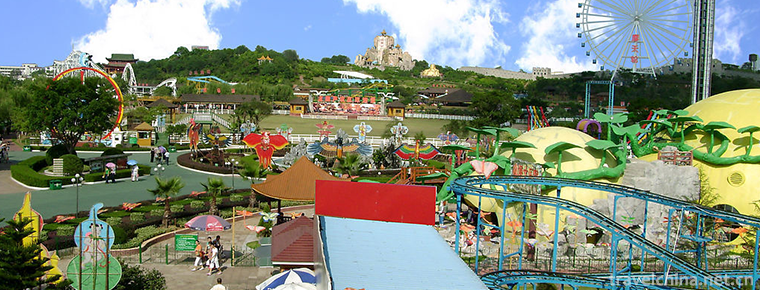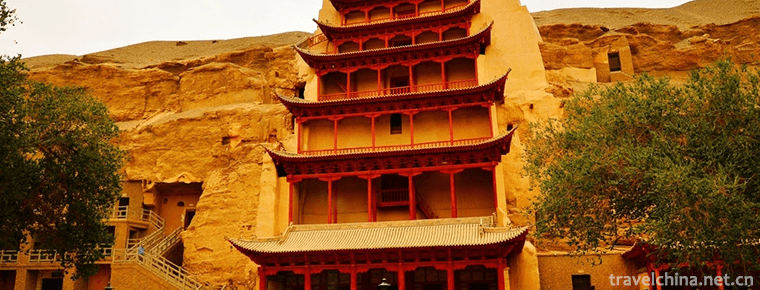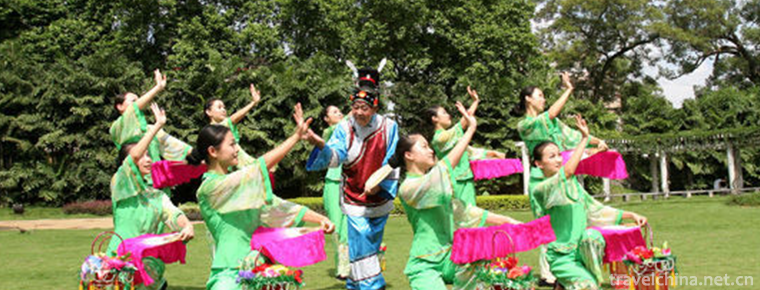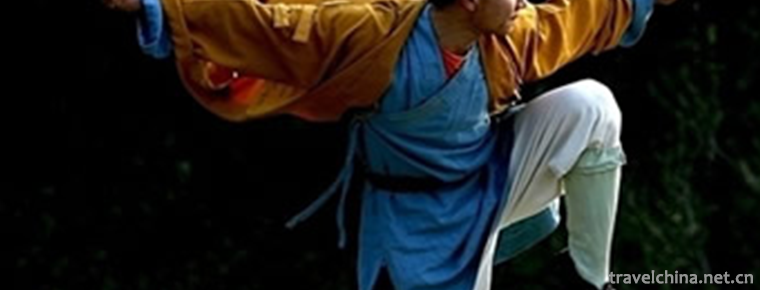Qianjiang Folk Songs
Qianjiang Folk Songs
Qianjiang folk song is a traditional folk song in Hubei Province. Popular in Qianjiang City, folk songs created by local working people in their work, life and customs. Its rich content, wide range of subjects, variety and unique style make relevant experts and scholars amazed. In a sense, Qianjiang folk song is also the weapon of struggle, the command of labor, the carrier of lyricism and the tool of entertainment for the local people.
On June 7, 2008, Qianjiang folk song declared by Qianjiang City of Hubei Province was listed in the second batch of national intangible cultural heritage list with the approval of the State Council. Heritage serial number: 581 II-82.
historical origin
Qianjiang folk song is one of the typical representatives of Chu Song legacy. In the Zhou Dynasty, she belonged to Zhou Nan, ranked first among the fifteen national styles, and was the main body of elegant music and Yan Yue; in the late Warring States Period, "Yang (Yang) A", which Quyuan and Song Yujin liked to talk about, was Qianjiang folk song; in "Four Sides of Chu Song", it sang "Chicken Song" of Qianjiang; in the Han Dynasty, "Chu Song Says Yan" and in the Wei and Jin Dynasties, Qianjiang folk song. Jiang folk song is an indispensable part. "Lower Voice" refers specifically to Qianjiang folk songs. Emperor Liang Jianwen of the Southern Dynasty said in The Book of Kings in Eastern Hunan: "Therefore, the jade emblem Jinju is scorned by my humble eyes, and the Ba people are more likely to listen to it."
artistic characteristics
Qianjiang folk songs are rooted in Qianjiang dialect. In addition to the Chu dialect of "Lun" and "some" in "Chuci" which is still the common "mantra" in this area, the tone color analysis of the language shows that Qianjiang, Tianmen and Xiantao (formerly Xuyang) are a color area, which is relatively independent of Jianghan because of less influence from the outside world. The plain has some influence. The Qianjiang River is the center of this color area, and the tone of the language radiates to the surrounding counties and cities to form variations. Its linguistic tone features are as follows: high tone is a color tone, which is classified as Yinping and deafening of the four tones in the tone of voice; middle tone is a nuclear tone, which is classified as Yang Ping; bass is a pillar tone, which is classified as upper tone.
Qianjiang folk songs mostly belong to three-tone folk songs. There are four kinds of common forms: 1. the symbolic trisyllable "152 (1 is treble)"; 2. the Gong trisyllable "315 (5 is bass)"; 3. the feather trisyllable "163 (1 is treble)"; 4. the twin trisyllable "652". These four prototypes of regular trisyllables are like the deformation of harmony transposition, and the free alternation and mutual penetration of these trisyllables lead to rich and colorful folk music. So Qianjiang has been known as "the land of folk songs" since ancient times. In Huainanzi Shuoshan, "Those who want beauty and harmony must begin with Yanga and Cailing." "Jiangling Music" in "Everyone stop to see, the voice is good." It is the praise of Qianjiang folk songs in historical books.
Representative repertoire
"Counting clams", "Urging" and "Where can I go back to my mother's house in my spare time", "Cucumber" and "Shixu Shoes", "There's a Small Place in China" by Wang Yan in 2011, and "Singing Your Qianjiang" by Zhang Wao, a Qianjiang singer, etc.
Inheritance Significance
1. Blind artists sing: Blind artists make a living by singing, absorbing a large number of folk songs and minor tunes into the song heritage;
2. Labor inheritance;
3. Inheritance combined with customs and festival customs;
Fourth, the inheritance of drama: Jingzhou Huagu Opera and Shadow Opera absorb and draw lessons from Qianjiang folk songs to spread into the opera.

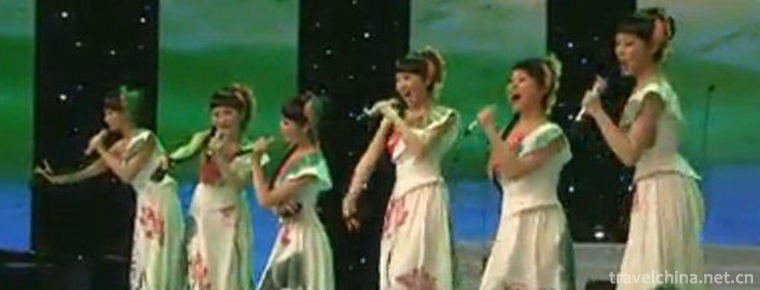
-
Bayanbulak Grassland
Bayinbrook grassland: formerly known as Yuledus grassland, Zhuledus grassland, Yuludus grassland, because it is mainly located in Xinjiang Bayinguoling Mongolian Autonomous Prefecture and the northwes.
Views: 124 Time 2018-12-12 -
Zhashlenbu Temple Scenic Spot in Shigaze
Zashrunbu Temple means "auspicious Xumi Temple". Its full name is "Zashrunbu Baijid Qinqu Tangkelenan Bajawalin". It means "auspicious must gather in Fushu to win over Fangzho.
Views: 225 Time 2018-12-12 -
Hulu Mountain Villa Tourist Scenic Area
Huludao Mountain Resort is located on the Bohai coast in the northeast of Huludao City, Liaoning Province. The rich and colorful Huludao Mountain Resort is located in Huludao City.
Views: 165 Time 2019-01-16 -
Mogao Grottoes
Mogao Grottoes, commonly known as Thousand Buddha Caves, are located in Dunhuang at the western end of Hexi Corridor. It was built in the pre-Qin period of the Sixteen Kingdoms..
Views: 245 Time 2019-02-07 -
Ba Shan Bei Er Song
Bashan Beibei Song refers to a traditional folk song which was produced and spread in the area under the jurisdiction of Bazhong City at the southern foot of Micang Mountain in northeastern Sichuan Pr.
Views: 279 Time 2019-04-03 -
Changli folk songs
Changli folk song is a kind of local folk ditty inherited from generation to generation by Changli people. The content of singing can be divided into four categories: labor chant, story and legend, lo.
Views: 183 Time 2019-04-15 -
Longyan tea lamp
Longyan tea-picking lamp, also known as tea-picking and butterfly-beating, is a popular folk dance and singing in Longyan city and countryside. It integrates rap, opera and dance into a comprehensive .
Views: 196 Time 2019-05-14 -
Shaolin Kung Fu
Shaolin Kungfu, also known as Shaolin Wushu, is one of the famous schools of Wushu in China. It has a long history and profound influence. It is an important part of Chinese traditional Wushu. The mos.
Views: 165 Time 2019-06-14 -
Traditional preparation methods of traditional Chinese medicine
Traditional Chinese medicine preparation method, one of the traditional Chinese medicine, is declared by the Chinese Academy of Traditional Chinese Medicine and the Chinese Association of Traditional .
Views: 193 Time 2019-08-03 -
University of Chinese Academy of Sciences
University of Chinese Academy of Sciences ( University of Chinese Academy of Sciences Referred to as "National Science and Technology University", was approved by the Ministry of education. .
Views: 111 Time 2019-12-11 -
Hydrological survey of Mianyang
Affected by the landform, Mianyang has abundant precipitation, large runoff, vertical and horizontal rivers and developed water system. There are more than 3000 rivers and gullies in the city. All rivers and gullies flow into Fujiang, Bailongjiang and Xihe.
Views: 335 Time 2020-12-14 -
Leshan medical and health
By the end of 2018, Leshan City had 3259 health institutions (including village clinics). Among them, there are 102 hospitals, 207 health centers, 12 maternal and child health centers (stations, stations), 12 centers for Disease Control and prevention, 12 health .
Views: 329 Time 2020-12-17

